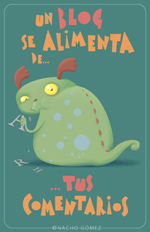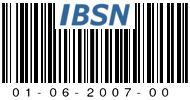El Mediterráneo es el mar más invadido del mundo y la cadena alimentaria se está reestructurando
El pez globo venenoso (Lagocephalus sceleratus) es una de las especies que han invadido los ambientes costeros de la zona oriental del Mar Mediterráneo.
Más de 900 especies exóticas nuevas se han encontrado en los entornos costeros del Mediterráneo oriental en las últimas décadas, incluyendo el pez globo venenoso. La invasión de especies exóticas ha tenido la consecuencia de que toda la cadena alimentaria está cambiando, si bien existe una falta de conocimiento sobre la cual basar las evaluaciones de riesgo pertinentes, muestra un estudio de cuatro años realizado en la Universidad de Gotemburgo.
"El Mediterráneo es el mar más invadido del mundo, pero nuestra comprensión de cómo las especies exóticas afectan a los ecosistemas se ha inhibido por la falta de conocimientos básicos de los animales y las comunidades de plantas en la costa. Una vez que las especies se han establecido en el Mediterráneo es casi imposible erradicarlas", dice Stefan Kalogirou del Departamento de Ecología Marina de la Universidad de Gotemburgo.
Cuando fue terminado el Canal de Suez en 1869, fue creado un corredor para la propagación de especies exóticas hacia el Mar Mediterráneo, que está siendo sometido a grandes cambios en las comunidades animales y vegetales. En los últimos años, los informes periódicos de las especies exóticas de varios de los ambientes costeros del Mediterráneo oriental han causado preocupación por lo que va a pasar con las especies autóctonas y los ecosistemas.
Durante un período de cuatro años Kalogirou, en colaboración con el Centro Helénico de Investigaciones Marinas, ha estudiado la estructura y función de las comunidades de peces en el mar y las algas y praderas en los fondos arenosos en dos ambientes costeros importantes de la isla de Rodas en el sureste de Grecia. Esto ha proporcionado importantes conocimientos sobre la biología de la invasión, es decir, posibles consecuencias ecológicas de las especies exóticas en la cadena alimentaria.
"Los resultados muestran un claro impacto ecológico o una posición dominante cuando existen especies exóticas, como el pez globo (Lagocephalus sceleratus), o son piscívoros, como la barracuda (sphyraena sphyraena) y el pez trompeta (Fistularia commersonii). Es evidente que la cadena alimentaria se está reestructurando, pero la falta de estudios previos limita nuestras conclusiones".
El pez globo venenoso es una de las especies exóticas que se han introducido recientemente. La toxina del pez globo, la tetrodotoxina, causa parálisis muscular, que puede conducir a paro respiratorio. En el peor de los casos el resultado puede ser fatal. En los ambientes costeros que Kalogirou ha estudiado, el pez globo se ha convertido en una especie dominante, lo que ha motivado efectos ecológicos y sociales (ver un impresionante vídeo de cómo un cocinero japonés prepara este pescado: Alucinante preparación en cocina del pez Fugu japonés).
"No parece haber una conciencia en el ámbito europeo de la rapidez con especies de propagación a nuevas áreas, hay una falta de conocimientos básicos de la metodología de seguimiento, la vida de las características específicas de las especies exóticas y las evaluaciones de riesgos. El impacto de especies exóticas, conocidas como contaminación biológica, es algo que debe tenerse en cuenta en las evaluaciones de impacto ambiental", señala Kaligirou.
Proporcionado por la Universidad de Gotemburgo | Artículo de Stefan Kalogirou "Mediterranean Sea invaded by alien species" y resumen de su tesis doctoral "Alien fish species in the eastern Mediterranean Sea: Invasion biology in coastal ecosystems
Publicado en: http://www.vistaalmar.es/index.php?option=com_content&task=view&id=1620&Itemid=261&utm_source=feedburner&utm_medium=feed&utm_campaign=Feed%3A+vistaalmar+%28Vista+al+Mar%29
Pedí autorización al Editor de esta interesante www para publicar su 'entrada' en mi Blog. Espero respuesta positiva.
RECOMIENDO A MIS LECTORAS/ES VISITAR ESTA EXCELENTE PAGINA WEB Y TAMBIEN SUSCRIBIRSE O ANOTARSE COMO 'SEGUIDOR' DE LA MISMA.
Lic. Jose Pivín
frente al puerto de Haifa
frente al Mar Mediterráneo
Alien Fish Species in the Eastern Mediterranean Sea: Invasion Biology in Coastal Ecosystems
Stefan Kalogirou's public defence of his doctor's thesis
Stefan Kalogirou's doctorate thesis at the Faculty of Science, Department of Marine Ecology.
Subject: Biology, on a thesis with the title "Alien fish species in the eastern Mediterranean Sea: Invasion biology in coastal ecosystems".
Date: Friday 13:th of May 2011.
Time: 10.00 am.

Stefan Kalogirou's contact information
Stefan Kalogirou
Department of Marine Ecology - Kristineberg
University of Gothenburg
Kristineberg 566
SE-451 78 FISKEBÄCKSKIL
SWEDEN
Present address:
Hydrobiological Station of Rhodes
Hellenic Centre for Marine Research
Cos street
85 100 Rhodes
GREECE
Phone:
0030 22410 27308 (ext. 27)
Mobille:
0030 6970722196
Fax:
0030 22410 78321
E-mail:
Place: The lecture hall at Sven Loven´s Centrum på Kristineberg, Fiskebäckskil.
Opponent: Professor Daniel Golani, The Hebrew University of Jerusalem, Israel.
Examiner and chairman at the public defence: Professor Kristina Sundbäck, The Department of Marine Ecology, University of Gothenburg.

Abstract
The spread of non-indigenous species (NIS) in the eastern Mediterranean Sea is an ongoing and accelerating process. Non-indigenous species are regularly reported from various coastal habitats in the eastern Mediterranean Sea but fundamental knowledge on the assemblage structure of coastal fish communities are lacking. This thesis aims to increase the knowledge on the fish assemblage structure and function of Posidonia oceanica meadows and sandy habitats in a coastal area of the eastern Mediterranean Sea and give insight into invasion biology by investigating the potential impact of introduced fish species to the local ecology and food-web of the marine systems under study.
Functional and feeding guilds were developed to investigate the fish assemblage structure and function of coastal fish communities and to assess the potential role of NIS in the food web. In addition, diet investigations were considered important first steps in order to evaluate the potential role and impact of recently established NIS in the recipient region. During the sampling campaign two species were for the first time reported in the area.
Posidonia oceanica was found to be a multifunctional habitat for fish species. It was found to be a highly important nursery habitat for several species during summer and a habitat that could under certain seasons concurrently be used by both adults and juveniles. Four functional guilds were created to describe the habitat use of P. oceanica meadows for each species encountered; juvenile migrants, seagrass residents, seasonal migrants and occasional visitors. Affinity of each species to P. oceanica was assessed in a comparison with each species distribution on open sand within the same depth range. Among the 88 species encountered, eleven were found to be non- indigenous of Indo-Pacific and Red Sea origin, three of them using segrass mainly as juveniles, and four as residents.
In a comparison of fish assemblage structure between seagrass and sandy habitats quantitative sampling in combination with classification of fish species into six major feeding guilds revealed the position and contribution of non-indigenous species (NIS) in the food web of Posidonia oceanica and sandy habitats. In P. oceanica beds and on sandy bottoms 10 and five species, respectively, were non-indigenous of Indo-Pacific and Red Sea origin. The proportional contribution of NIS individuals on P. oceanica beds was lower than that of sandy bottoms (12.7 vs. 20.4 %) a pattern that also followed for biomass (13.6 vs. 23.4 %), indicating that low diverse systems may be more prone to introductions than species-rich communities. The two habitats had similar fish feeding guilds, but the biomass contribution from NIS varied within each guild, indicating different degrees of impact on the available resources. Size was considered highly important due to habitat shift of species with increased size. Two of the aspects considered in this study, the chance of establishing and the chance of being very dominant will depend upon competitive abilities strongly coupled to size and grounds for habitat shift. However, success of establishment will also depend on appropriate food resources in the recipient community as well as competitive abilities and level of competition in the food web within habitats. No support could be found for the theory that taxonomic affiliation could facilitate invasion success.
The non-indigenous bluespotted cornetfish Fistularia commersonii was found to be a strictly piscivore predator and the diet consisted of 96 % by number and >99 % by weight of fish. The diet of F. commersonii was related to time of year, and fish size. Size classification and habitat of prey groups (benthic, supra-benthic, and pelagic) showed that with increased body length it extended its diet to larger prey and more generalist feeding. Fistularia commersonii was found to prey on commercial important native species (e.g. Spicara smaris, Boops boops, Mullus surmuletus) and the absence of NIS from its diet was mainly attributed to the absence of NIS with elongated body shape.
The feeding ecology of two common indigenous (Sphyraena sphyraena and Sphyraena viridensis) and one abundant non-indigenous barracuda, Sphyraena chrysotaenia, of Indo-Pacific origin, was investigated. Confamilial feeding interactions was studied to investigate overlap in feeding preferences in relation to availability of prey items. Dietary analyses revealed that all three species examined were specialized piscivores with their diet consisting to more than 90 % of fish, both by number and weight. All three predators examined showed a significant selectivity towards Atherina hepsetus. Diet breadth and size of prey increased with increased body size, whereas diet overlap between indigenous and NIS decreased, attributed to increased diet breadth and specific life characteristics of indigenous species developing into larger predators extending their foraging habits. During winter, condition of the NIS was significantly lower than that of the indigenous species, indicating that winter temperature in the studied area may be a limiting factor for further population growth of this Indo-Pacific species. This study filled the gap in knowledge about the feeding preferences of the most abundant piscivorous species found on the coasts of the studied area. Additionally, congeneric affiliation of fish introductions was not found to be an important factor explaining successful establishment of NIS.
The non-indigenous toxic pufferfish, Lagocephalus sceleratus, was reported for the first time in the Mediterranean in 2003 and two years later in the coastal habitats of Rhodes. The ecological and societal impact of the pest pufferfish was investigated in coastal habitats of Rhodes. Seasonal quantitative sampling in two common coastal habitats was used to investigate habitat use of different life-stages. Sandy areas were found to be highly important for the early life stages of L. sceleratus. In contrast, Posidonia oceanica habitats were mainly preferred by larger (> 29 cm) reproductive adults with a maximum recorded size of 64 cm. Lagocephalus sceleratus was found to be an invertebrate and fish feeder while size classification revealed a tendency for an ontogenetic diet shift with increased size to a molluscivore feeding. The ontogenetic diet shift is most probably attributed to a shift in habitat use with increasing size. During early life stages L. sceleratus inhabited sandy bottoms where it fed on various invertebrates, including the genus Nassarius and Dentaliidae. The predominant molluscan species found in the diet of larger (> 20 cm) L. sceleratus individuals was Sepia officinalis while predation of Octopus vulgaris was less successful. Sepia officinalis and O. vulgaris are of economic interest in the area and the impact of L. sceleratus on local stocks of these species is discussed. Societal impacts were also evident in the area due to increased public attention concerning the lethal effects of the toxic L. sceleratus, if consumed. Seasonal variations in the condition of L. sceleratus did not show any significance and the high conditional values together with information on high numbers caught during samplings, signifies its ability to become an important member of the coastal fish community. Combined ecological, economical and social effects clearly classify L. sceleratus a pest in the area.
Please find more of the thesis here at the Gothenburg University Publications Electronic Archive
fuente: http://www.marecol.gu.se/english/Research/lic_doc_theses/stefan-kalogirou-dissertation/.
Please use this identifier to cite or link to this item: http://hdl.handle.net/2077/24869





































No hay comentarios:
Publicar un comentario